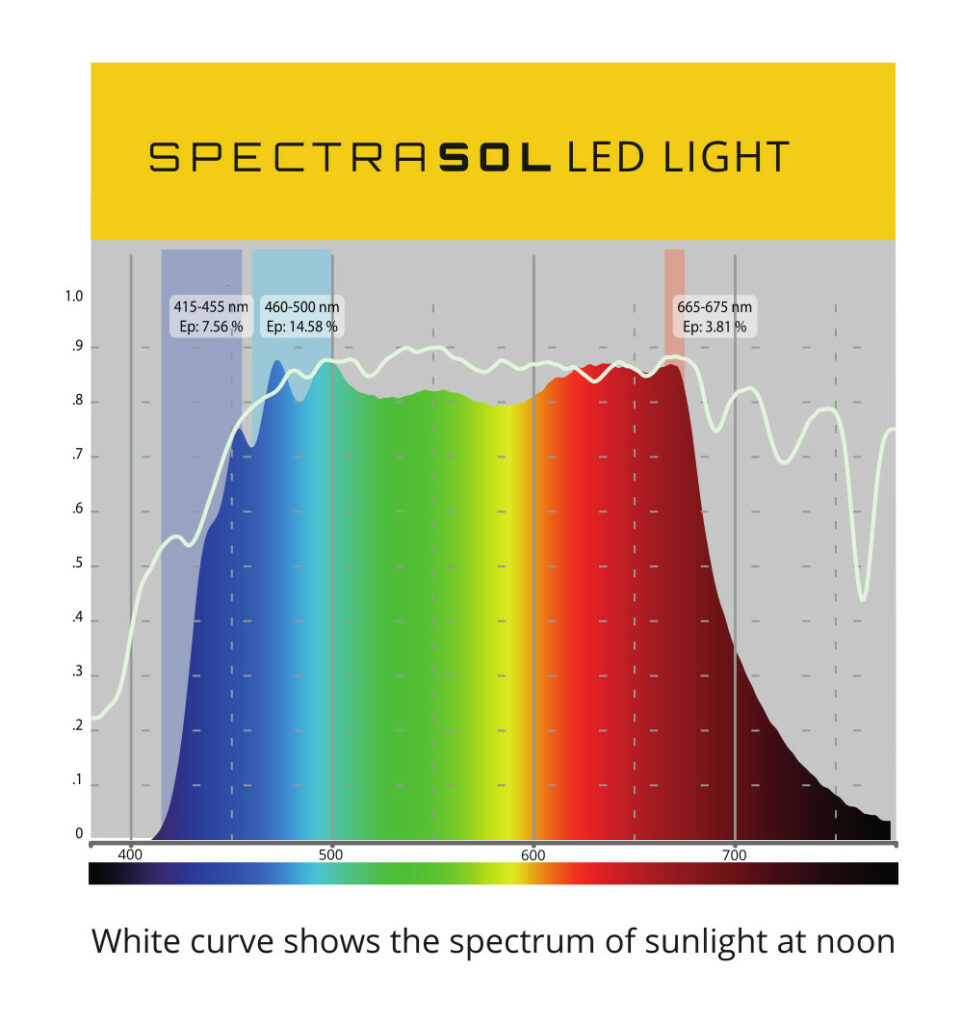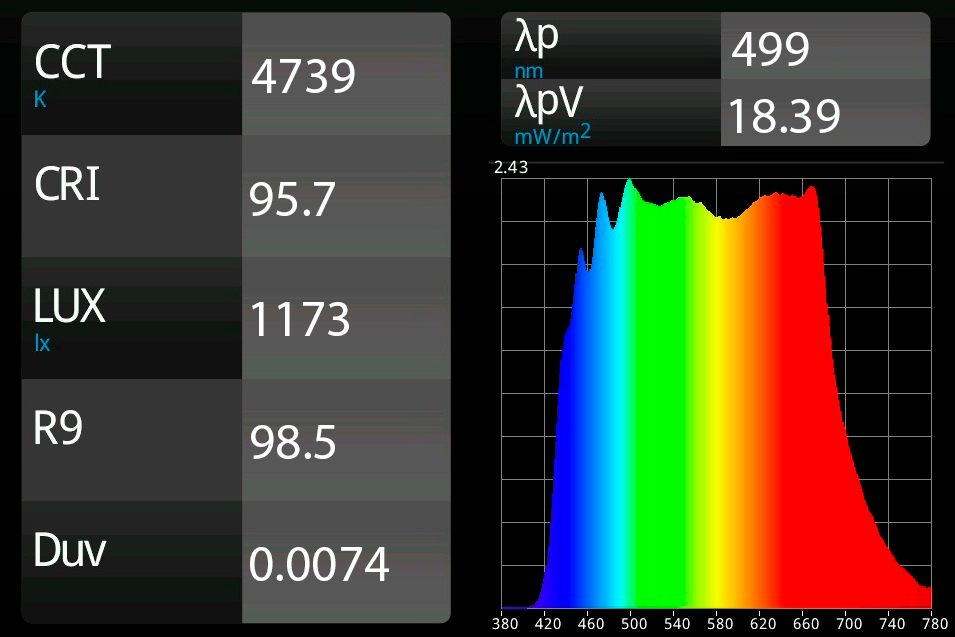Spectrum equilibrium
The daylight spectrum, which is faithfully imitated by Spectrasol illumination, contains all the colour components of the visible spectrum (all wavelengths), and thus has a strong influence on the visual and non-visual system of the eye, i.e., the vision and the circadian system. These spectral components are evenly distributed, which means the spectrum of daylight is balanced and continuous without prominent maxima and minima or peaks and valleys. The ideal spectrum of interior artificial lighting for use during the day must therefore resemble daylight as much as possible [1],[2] – during the day, it is this full-spectrum light to which our human biochemistry is evolutionarily entrained to. The reason for this entrainment is our evolutionary history. Throughout billions of years, all life on Earth has evolved under the bright full-spectrum light of the sun during the day [3],[4]. This spectrum has no emission minima (dips) and radiates continuous energy across the entire visible spectrum. This evolutionary entrainment not only necessitates full-spectrum light, but also light of high intensity as daylight normally exceeds the value of tens of thousands of lx and its spectral maximum lies at approximately 477 nm, i.e. very close to the absorption maximum of the photopigment melanopsin contained in special retinal cells (ipRGCs) that control the circadian system [3],[5]. Bright full-spectrum lighting thus regulates and promotes healthy circadian entrainment . Such lighting is natural and desirable during the day for both visual (image-forming) and non-visual (non-image-forming) systems of the eye [3],[6],[7].

Summary and comparison of the spectrum equilibrium of typical light sources
Spectrum equilibrium describes how the spectrum of a given light source is continuous and similar to sunlight.
- The fluorescent lamp has a discontinuous spectrum – it is last century’s light type designed for the visual system (the human eye can indeed see and distinguish colours under the fluorescent light), but not for the non-visual system (circadian entrainment). The quality of this spectrum is very low and farthest from the natural daylight.
- A conventional LED light source has a more continuous spectrum than the fluorescent lamp, but has a concentrated maximum (peak) in the blue region followed by a very prominent dip in the cyan region, i.e. this spectrum is unbalanced and discontinuous with a very unfortunate minimum in the very important circadian-active cyan region.
- The Spectrasol LED light source has a fully continuous spectrum without significant maxima or minima that faithfully imitates sunlight
- The sun at noon emits full-spectrum bright white light that is fully continuous without prominent peaks or dips. This spectrum is much wider than the visible spectrum, because the Sun also emits UV and infra-red radiation.


